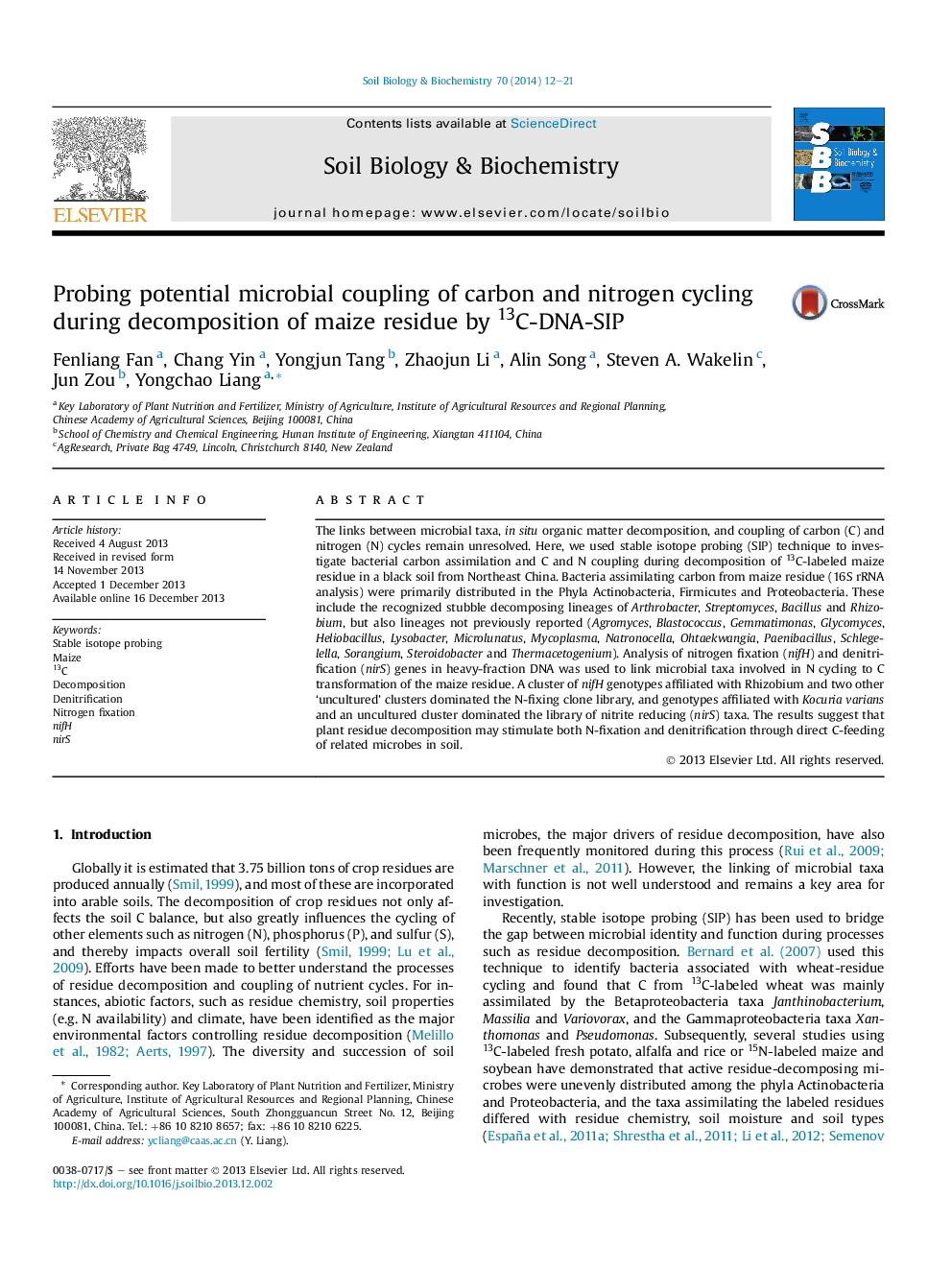| Article ID | Journal | Published Year | Pages | File Type |
|---|---|---|---|---|
| 8364873 | Soil Biology and Biochemistry | 2014 | 10 Pages |
Abstract
The links between microbial taxa, in situ organic matter decomposition, and coupling of carbon (C) and nitrogen (N) cycles remain unresolved. Here, we used stable isotope probing (SIP) technique to investigate bacterial carbon assimilation and C and N coupling during decomposition of 13C-labeled maize residue in a black soil from Northeast China. Bacteria assimilating carbon from maize residue (16S rRNA analysis) were primarily distributed in the Phyla Actinobacteria, Firmicutes and Proteobacteria. These include the recognized stubble decomposing lineages of Arthrobacter, Streptomyces, Bacillus and Rhizobium, but also lineages not previously reported (Agromyces, Blastococcus, Gemmatimonas, Glycomyces, Heliobacillus, Lysobacter, Microlunatus, Mycoplasma, Natronocella, Ohtaekwangia, Paenibacillus, Schlegelella, Sorangium, Steroidobacter and Thermacetogenium). Analysis of nitrogen fixation (nifH) and denitrification (nirS) genes in heavy-fraction DNA was used to link microbial taxa involved in N cycling to C transformation of the maize residue. A cluster of nifH genotypes affiliated with Rhizobium and two other 'uncultured' clusters dominated the N-fixing clone library, and genotypes affiliated with Kocuria varians and an uncultured cluster dominated the library of nitrite reducing (nirS) taxa. The results suggest that plant residue decomposition may stimulate both N-fixation and denitrification through direct C-feeding of related microbes in soil.
Related Topics
Life Sciences
Agricultural and Biological Sciences
Soil Science
Authors
Fenliang Fan, Chang Yin, Yongjun Tang, Zhaojun Li, Alin Song, Steven A. Wakelin, Jun Zou, Yongchao Liang,
